Background
People
Indigenous Peoples and TEK (Traditional Ecological Knowledge)
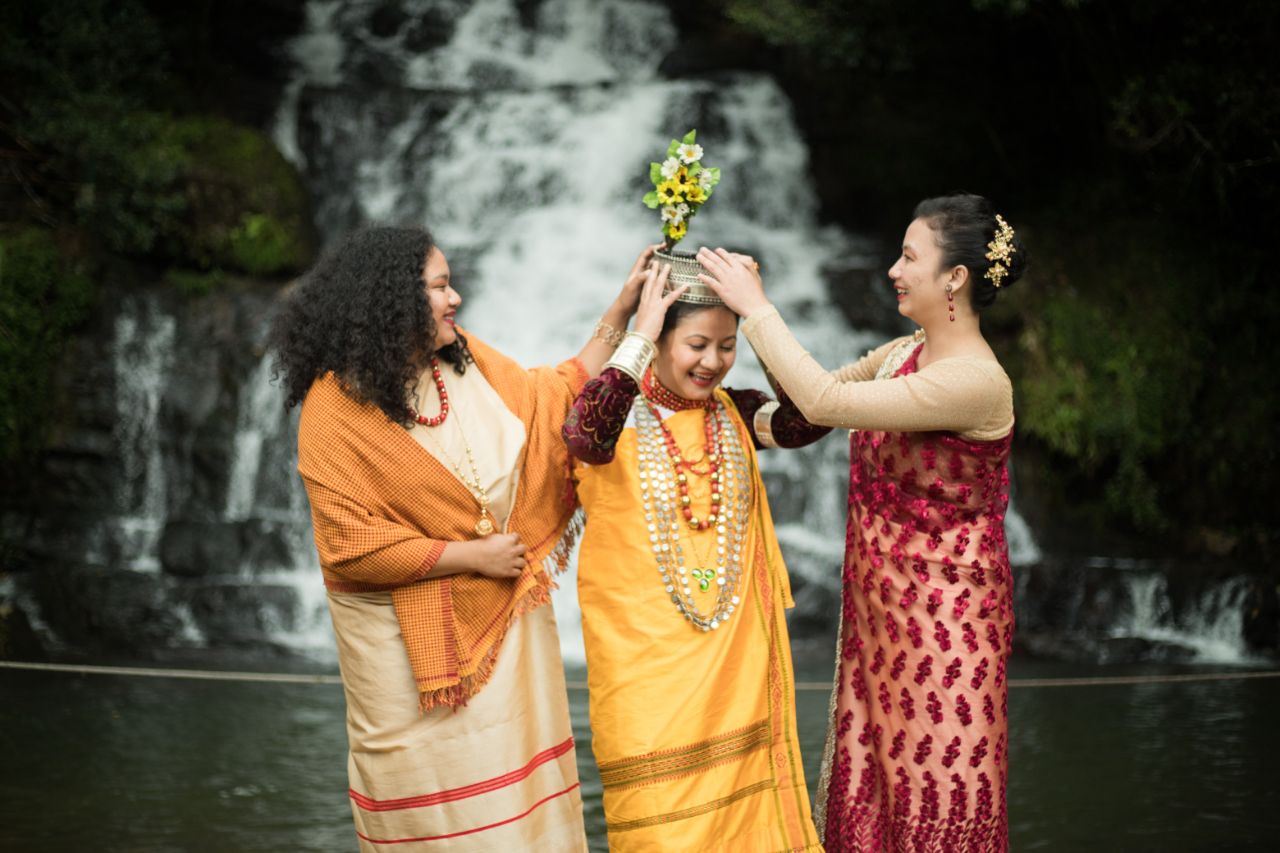
Indigenous thriving. Experiencing the land as one’s relation. A flourishing forest. Medicine in the land and water. How does a flourishing forest enable human life and health? To make sense of these seemingly isolated elements, this website explores Indigenous relationships with the more-than-human. This relational understanding guides holistic healing and Indigenous medicine on the land. Put another way, to better understand Indigenous biodiversity management and the myriad approaches to TEK in lived communities, we focus on Indigenous Khasi communities. The Khasi people are comprised of approximately 1.5 million people whose homeland is based in the semi-autonomous state of Meghalaya in Northeast India. Khasi communities have vibrant traditions of managing local forests and tending sacred groves, from which they are avid practitioners of dawai khasi (traditional Khasi medicine). As we explore here, traditional Khasi religion, matrilineal patterns of land management, strict regulation of forested regions, intergenerational tending of medicinal plants, and shared humility by traditional healers have ensured that the forests have thrived until recent years. These practices of tending plant and human relatives complement one another: ensuring maximal health of forest habitats fosters thriving plant communities which in turn can be used to foster greater resilience in human communities.
Khasi Origins
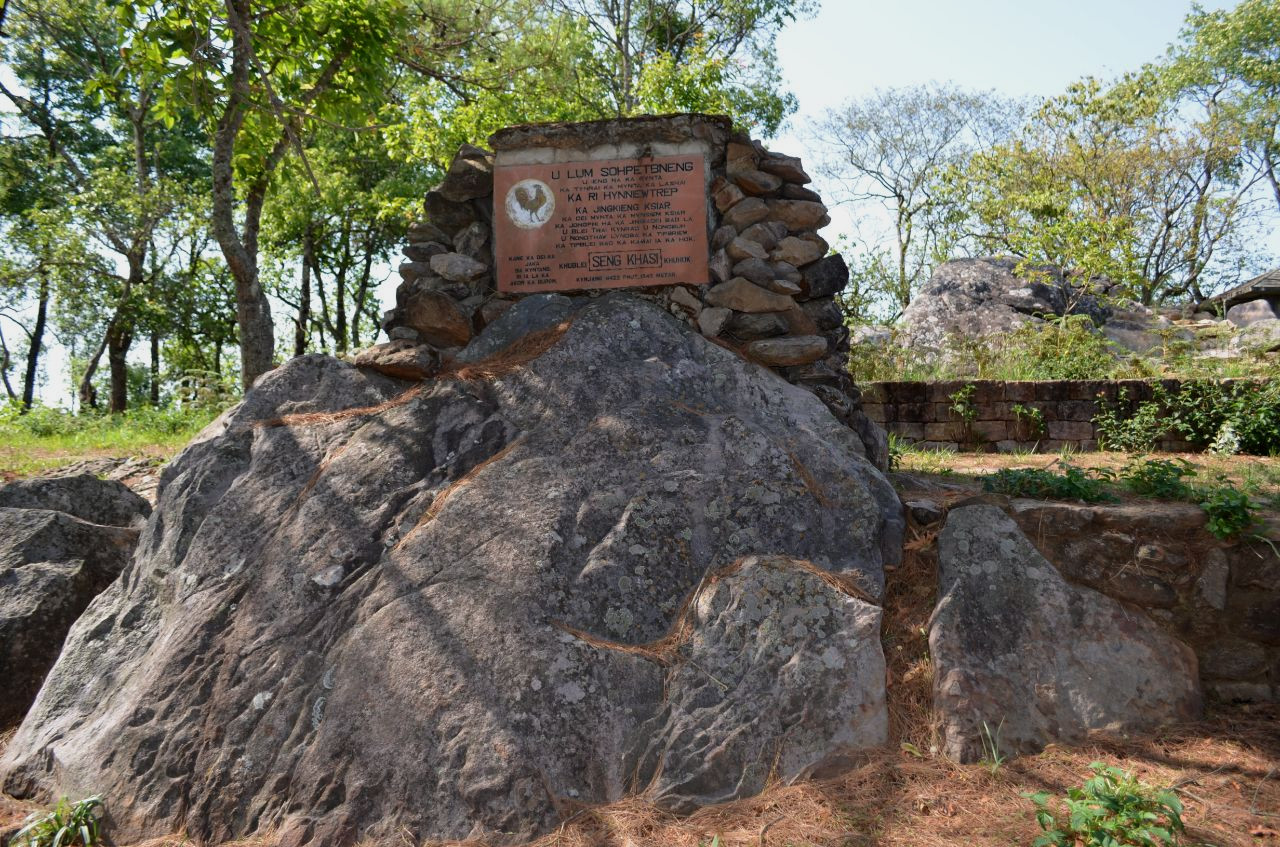
The Khasi origin story and their relationship to the natural world is symbolised by their traditional name, the Hyñniewtrep (“seven huts”).

Traditionally, Meghalaya was known by its Indigenous Khasi name, Ki Hyñniewtrep, or Land of the Seven Huts. The naming signifies relations between Khasi and the surrounding landscape, especially forests. According to Khasi mythology, in the beginning Khasi were divided into U Hyñniewtrep and Khyndaiskum (the Seven Huts and the Nine Nests), all of whom lived in the heavens. Slowly, seven of these huts learned how to grow food, and they began to travel to the earth by way of a massive tree which was a “ladder to heaven.” One day, however, the peaceful life was changed forever when those on earth were tricked into chopping down the tree that provided the ladder. This meant that the seven huts were then stuck on earth, separate from the nine nests, their brethren in heaven. God wanted to ensure the seven huts on earth would be able to grow a bountiful harvest and taught them how to plant crops to match the conditions of each season. Moreover, God taught humans about the rules they were expected to follow until they returned to heaven. After this time, all communications with the divine had to be done through signs and symbols (Mitri 2009: 28). Khasi understand this story as a valuable teaching: Humans should never become so arrogant as to forget their relationship with and neglect sacred beings on the earth – especially trees and the more-than-human world. Each of these sacred beings reflects our human connection with the Divine (Mitri 2009).
The location where the tree serving as the “ladder to heaven” was located is today known as Lum Sohpet Bneng, with “sohpet” meaning “navel,” “origin,” or “the root” in the Khasi language. Today this location is known as the origin site for the Khasi people (Mitri 2009: 29). Recent archaeological excavations in this region have yielded megalithic stone monuments and several Neolithic stone tools, all of which suggest a technological lineage dating back to 4000-1000 BCE (Mitri Ibid, 80-86), though even older by some accounts.
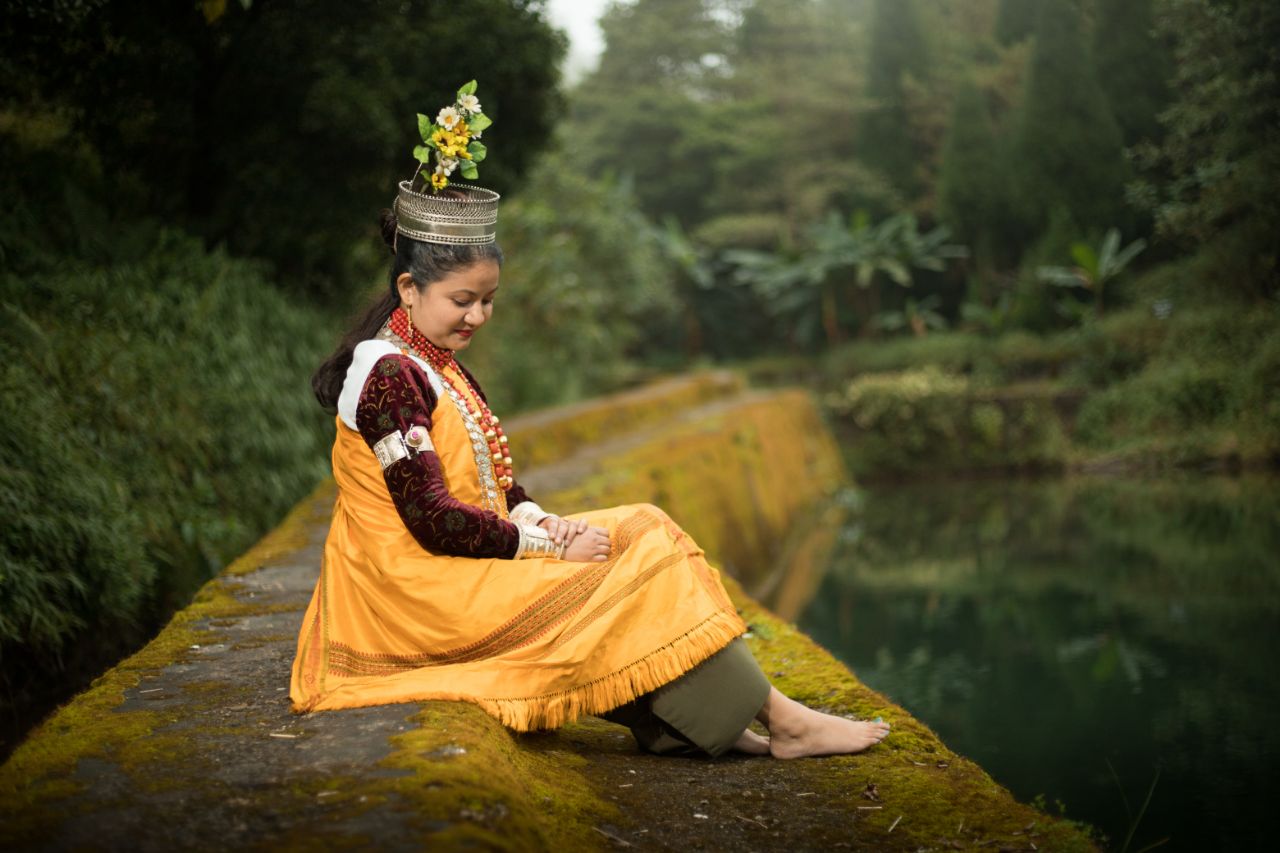
Humility toward the Natural World
Khasi naming marks these covenants with the natural world. All animate and inanimate things above, below, and on the surface of the earth are given Khasi names. In this way, Khasi imprint the landscape with a Khasi physical and cultural worldview.
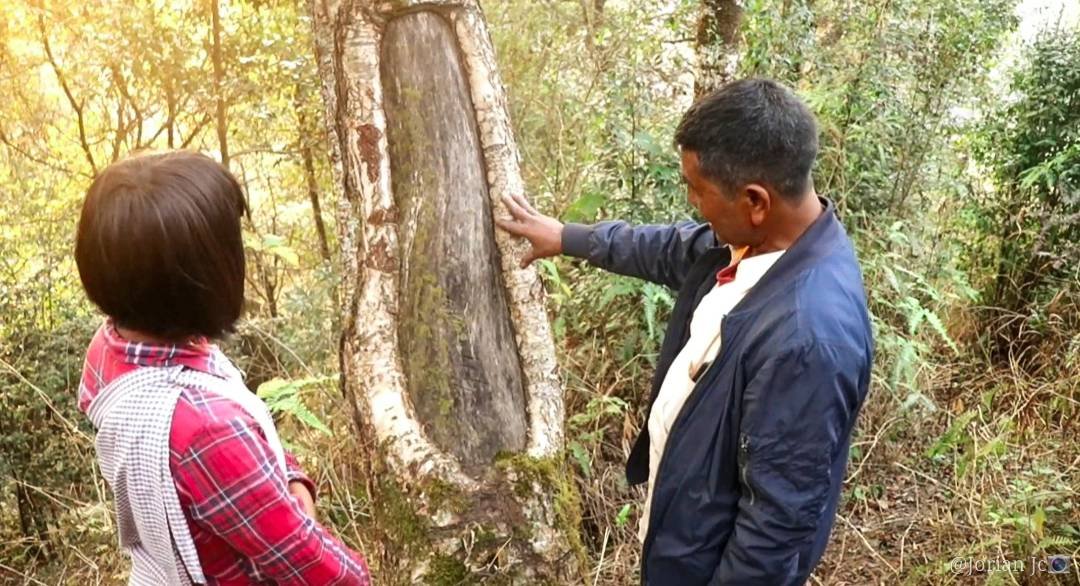
Traditional Land Management
Historically, Khasi land was managed within families or clan structures in a matrilineal system that prescribes that land should be passed from the mother to the youngest daughter. For each family, the youngest daughter is the custodian of land and property. However, pushed by poverty eradication programs, n eoliberal development schemes and the spread of the cash economy have put significant pressure on these traditional systems. Historically, land was tended by four groups: private forests (RiKynti) owned by individual families; village forests (Adong) utilized by the entire village but managed by local headmen (Sordar Shnong); clan forests (Kur) wherein the land is shared by an extended family; and community forests (Raid) which fall under the management of the regional leaders (syiems). “In the “village forest” (Adong) timber and other forest products were restricted to domestic usage and could not be sold commercially. This enabled a lifeline for the village as a whole and was tended carefully to ensure that it would meet the needs of many generations onward (Ramana and Shimrav 2007). In this way, shared responsibility to the more-than-humans served to ensure that the forest and the land that sustained it, would be viable for future generations.
Recent poverty eradication schemes like the “broom grass cultivation” program, urged communities to adopt the cash economy as a system of exchange, thus discarding the long-honoured Khasi system of land tenure. With pressure to open the land for limestone, coal, and other mineral extraction, families and clan landowners, and sometimes villages, face pressure to relinquish their land to surveyors and prospectors who dangle cash to convince communities and families to give up or sell their land. While the Khasi land tenure system remains strong, there is continued pressure to push individual landholders to issue an “NOC” (No Objection Certificate) and greenlight development on their land.
Place
Biodiversity

Sacred Groves: Biodiversity Hot Spots
According to the mythology of “Ki Hyñniewtrep,” some ancient Khasi were punished for not respecting the morality of the natural world. Through the traditional religion of the Khasi people, Ka Niam Khasi, certain forests are marked as “sacred groves” protecting the rare plants and trees that flourished there by strictly forbidding the disturbance or harm to these living forests. According to the ancestral teachings, anyone who dared pluck a flower or take plants from these groves without permission would succumb to illness or perhaps death.
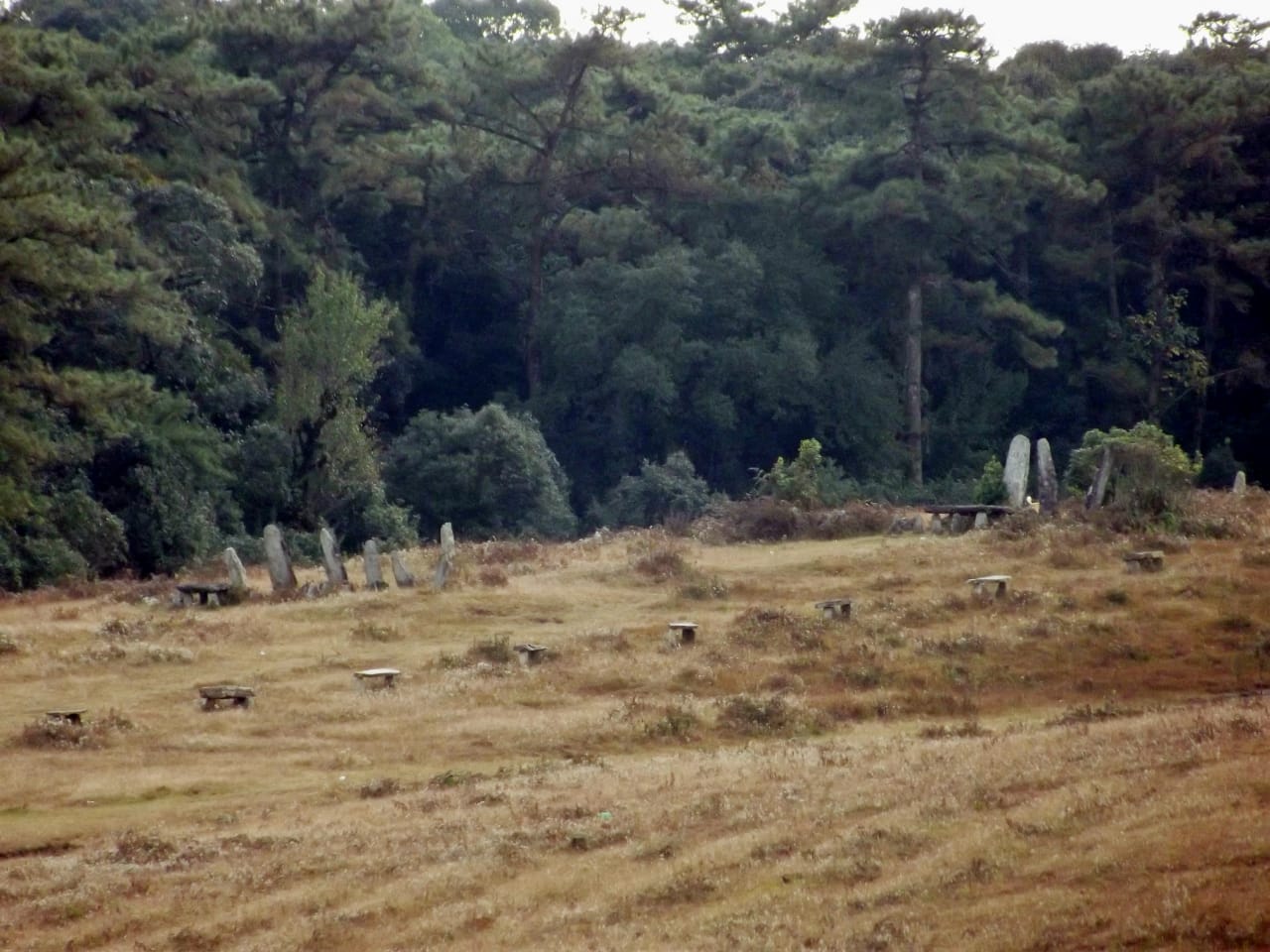
Mawphlang Grove
Khasi people tend roughly 79 sacred forests across the state, with the largest one encompassing 900 hectares (Tiwari et al 1999: 24). These sacred groves are home to a wealth of biodiversity and include a range of species not found elsewhere, and thus “represent the remnants of climax vegetation of the area” (Ibid, 14). For dawai khasi healers, the sacred grove nurture rare and important medicinal plants that have largely disappeared from other forests. As traditional healer Kong Kladis Paliar explained, “Some 200 medicinal plants and herbs that I used to tend and collect from these forests are now disappeared. I cannot find them, in any forest.” With the ongoing COVID pandemic, these forests now provide a bountiful pharmacy with medicines that may boost Khasi immunity and thus better prepare them to fight off the coronavirus. Among the climax forests nurtured in these sacred groves, one of the most notable is Mawphlang Grove, which now boasts a rich biodiversity of 400 distinct tree species within a 75-hectare area.
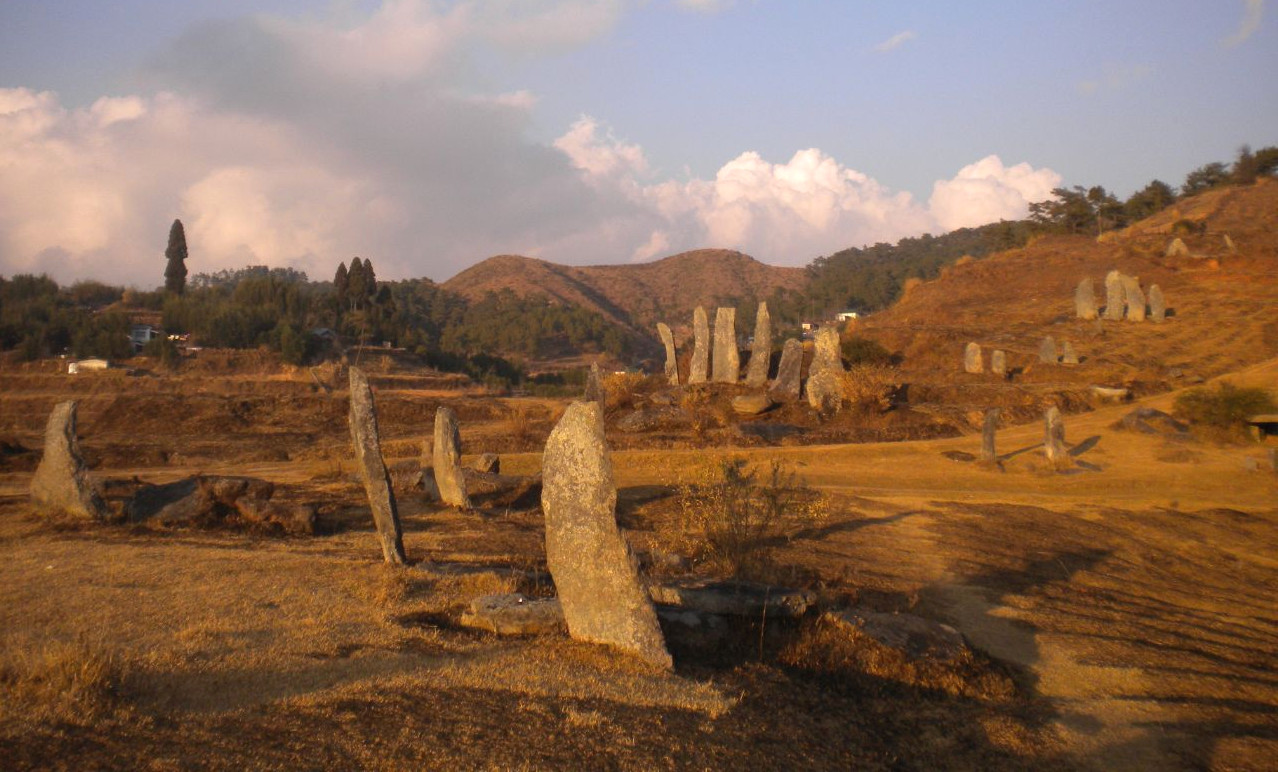
Monoliths: Marking Sacred Landscapes
Monoliths, like these placed in the surroundings of Old Mylliem Market, have been erected by ancestral Khasi to symbolically mark sacred sites where ancestors were cremated and familial remains buried. Alternately, these sites serve as memorials to honour clan communities and their bond with familial landscapes. As part of these familial relations, they also mark the boundaries of sacred groves cared for by matrilineal clans.
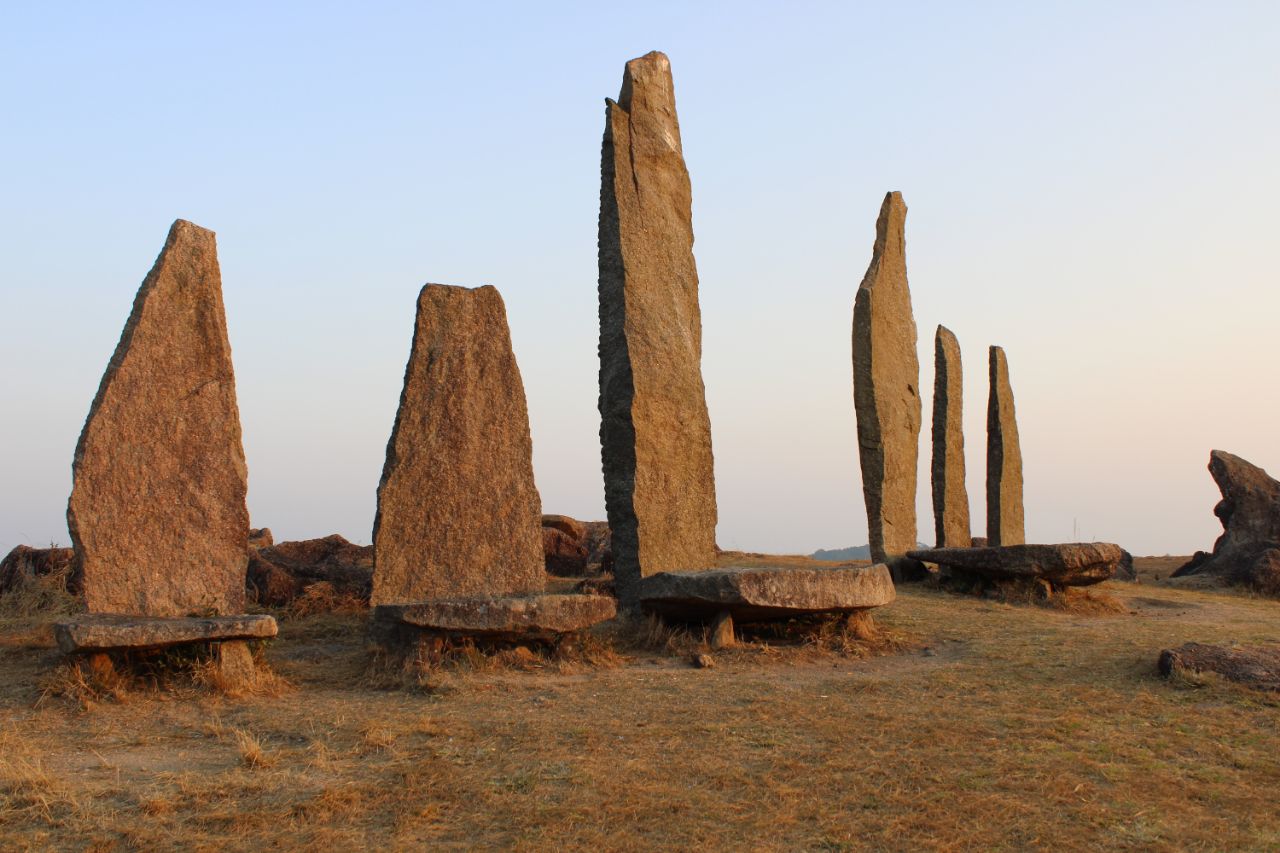
Monoliths: Sacred Sites for Honouring Ancestors
Khasi monoliths can be grouped into two groups: 1) Monoliths (Mawbynna Nam) used to memorialize ancestors when they have passed; and 2) Monoliths (Mawbynna Niam) erected as funerary stones, to guard ancestral remains and encircle clan burial sites. There is a third group of megaliths, known as Mawbri or Mawsam, may be set up to demarcate private lands belonging to clans or individual families, or to serve as a boundary marker between two clan sites (Mitri 2009).

Ancient History and Today’s Ethnotourism
Historically, these stone dolmens and monuments served to reinforce the unity of each matrilineal group. They also helped support the fertility and even boosted the cultural capital of individual clans in claiming control over certain geographical regions. Today they have become popular venues for tourists and sites for ecotour enthusiasts. For these visitors, living root bridges and monoliths are sentinels to the ancestral glory of the Khasi people. But the real genius of these monuments perhaps may be found in their ability to reinforce women’s social and political influence over their clan by connecting it to these local sites. For dawai khasi healers like Kong Kladis Paliar, connecting women’s familial networks with healing medicinal sites as in these sacred forests, these monoliths certainly strengthen women’s capacity to treat those who are sick.

Lum Sohpetbneng
Lum Sohpetbneng serves an important role as the origin site of the Khasi people. This mountain peak was the location where a heavenly ladder had been unfurled until the humans committed an offense against the forests and lost their access to heaven, and to the other nine villages, forever.
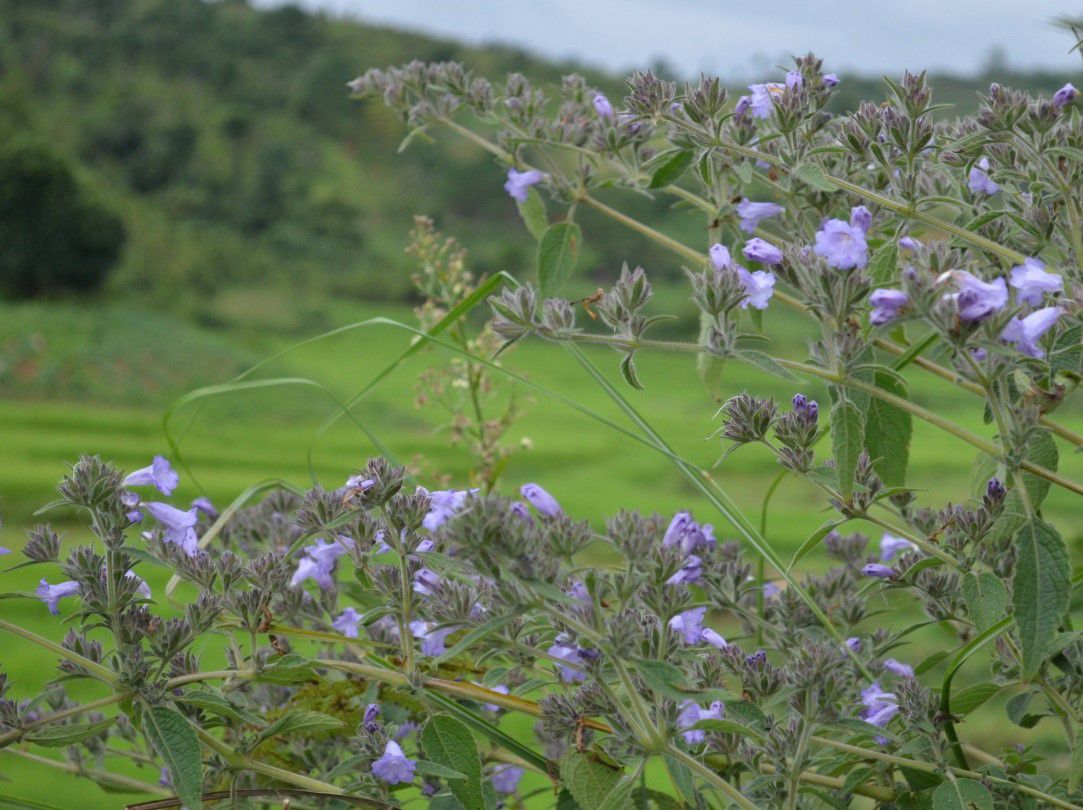
Jakhie
One of the most delicate and charming flowers of the Khasi Hills. Jakhie only blooms once every twelve years.
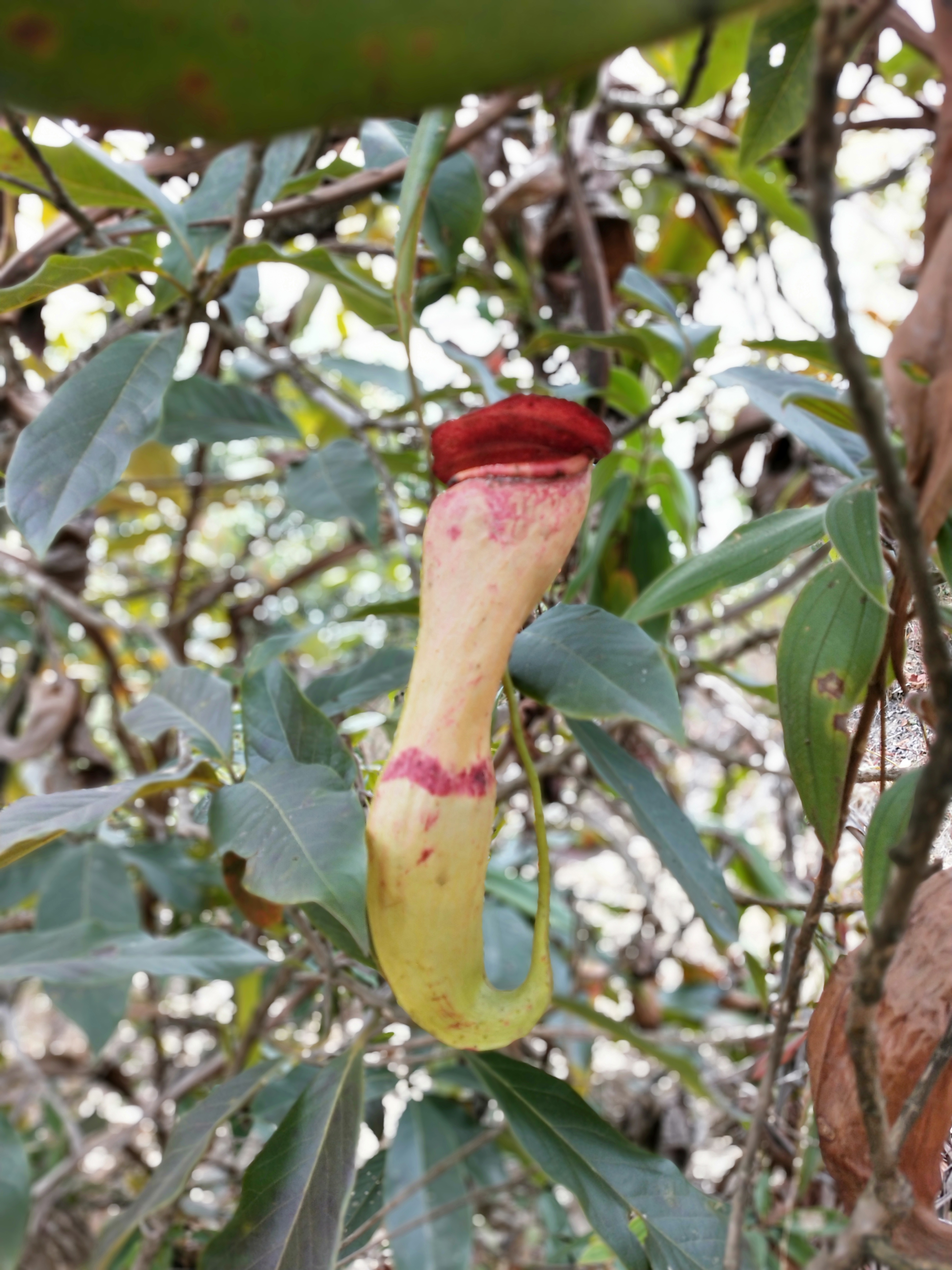
Local Vegetation: Pitcher Plants
Shaped like a small jug or pitcher, the flower of the pitcher plant (Nepenthes khasiana) stores water at its bottom which can provide a source of water.
Purpose
Content to come
Conclusion
As Dr. Boss Marthong pointed out, “The time has come to stop the cutting down of trees, burning of charcoal, broom cultivation, coal mining, and especially to stop providing dawai kynbat to outsider companies. These outsiders (mostly mainland Indians) purchase these traditional medicines at a cheap rate and later sell them at more than three times the original cost outside Meghalaya state. If the state government does not provide some financial support for cultivating these plants, the forests will continue to be degraded by this poaching, and there will be no medicines left to heal our people.”
While scholars have increasingly begun to understand that Indigenous peoples’ ethic of care for the landscape fosters some of the most robust and biodiverse ecosystems on the planet (Rundle 2019), scholarly analysis has failed to grasp how TEK is utterly dependent on a flourishing land base. That is, TEK is rooted in symbiotic relations through local landscapes and thus depends entirely on a healthy ecosystem to ensure that traditional medicines, and in turn, Indigenous libraries of knowledge carried by living elders, may thrive. For Indigenous communities across the globe, human survival and treatment of COVID-19 hinge entirely on a flourishing forest. As they have described above, if the forest withers or is cut down, the medicines, food sources, cultural plants, and other animal species likewise perish. Extractive industries—which contribute to climate change by developing fossil fuels—also pose an enormous challenge, as they threaten human and ecosystem health while also weakening Indigenous communities’ cultural practices and physical survival.
Biocomplexity, nevertheless, does help us better understand some forms of causality which enfeeble Indigenous-tended and otherwise robust, biodiverse ecosystems. That is, with environmental degradation due to mineral extraction, pollution, or other burdens, we can anticipate that ecosystems will be more vulnerable to the myriad hazards posed by climate change and public health pandemics (Gilio-Whitaker 2021). By the same token, Indigenous communities who have been deeply impacted by settler colonialism and the dispossession of their ancestral land base, have a greater tendency toward social and economic vulnerability. Taken together, these intersecting vulnerabilities translate into Indigenous peoples being less able to sustain biodiversity, especially if they are dispossessed of their lands, and as a result they are more susceptible to the harmful impacts of climate change, emergent pandemics, and the social and cultural impacts of these forces combined (Ibid). In these ways, we must more carefully analyze patterns of biocomplexity that impact Indigenous care for ecosystems and critically, what this means for sustaining Indigenous knowledges and the health of Indigenous communities themselves. These tools are critical to help us begin the difficult task of decolonizing and dismantling systems which engender ecocide and epistemicide, or the killing of Indigenous knowledge.
Dialogues with Indigenous medicinal practitioners in Northeast India and beyond suggest that boosting the sovereignty of Indigenous communities and enabling them to exercise self-determination over land is critical to ensuring biodiversity. Moreover, as we have learned from their Indigenous science, nurturing biodiversity and striving for balance within the forest ecosystem may prove to be the key to surviving the impacts of extractive industries, climate change, and indeed, future pandemics as well.